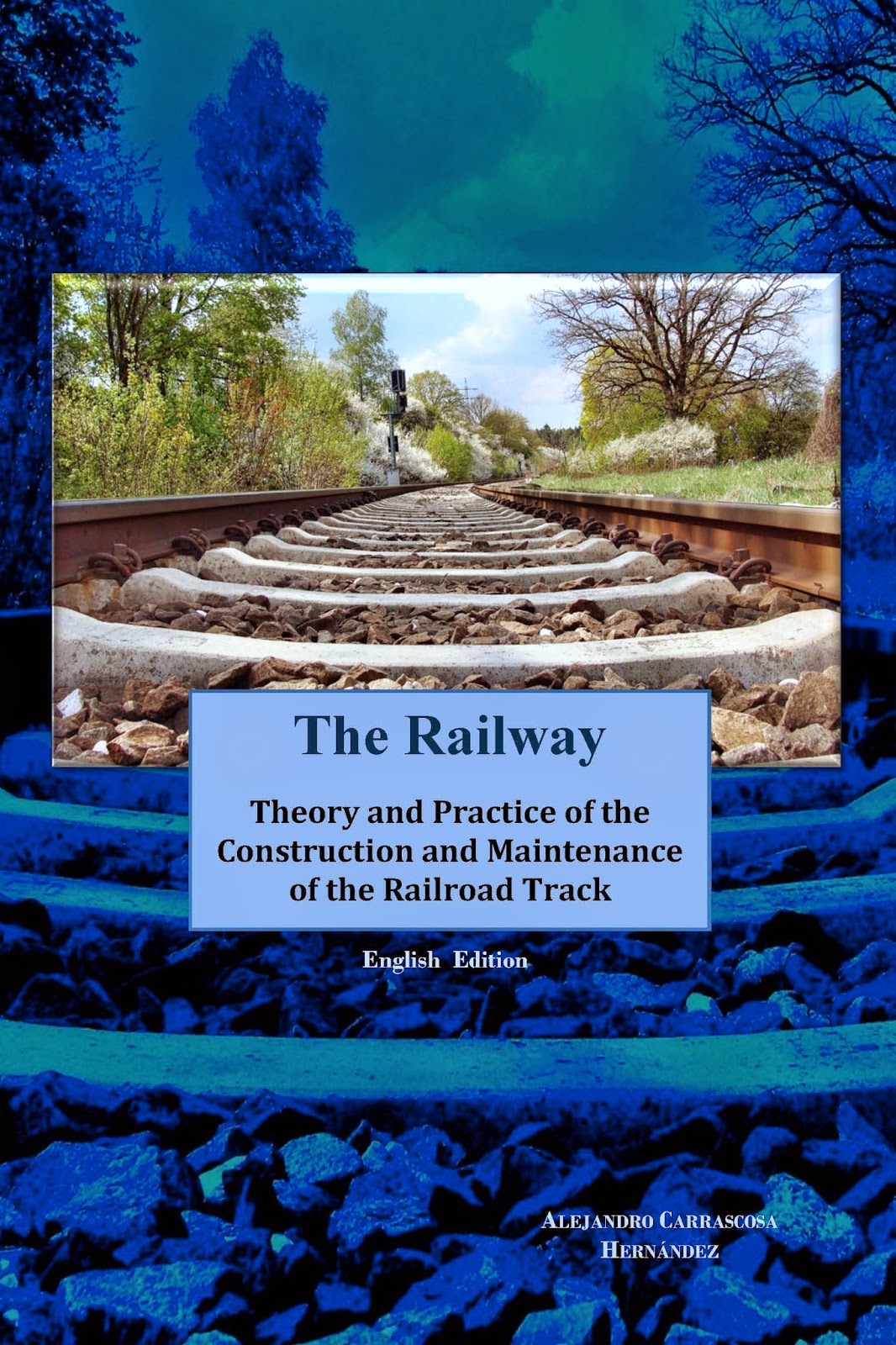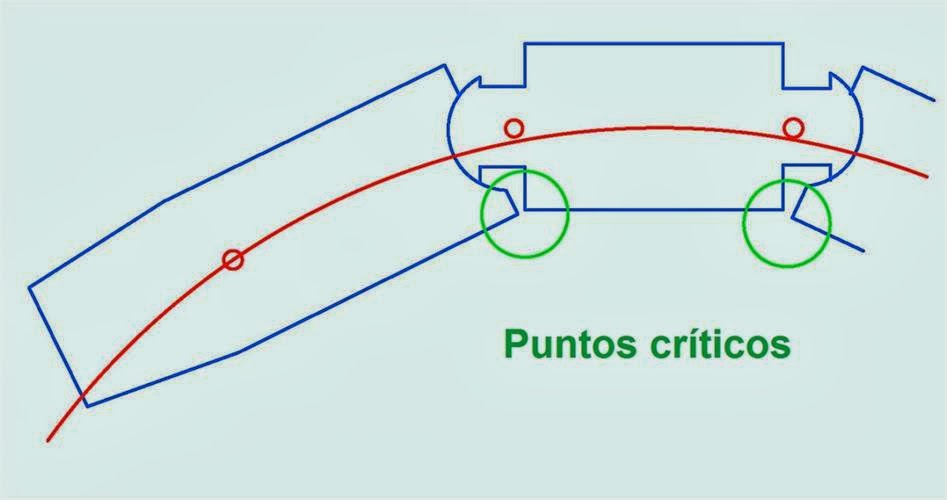The Clothoid, also known as ”Spiral of Cornú” or ”Spiral of Euler”, is a
curve with features that makes it ideal to design transition curves.
The mist valuable feature for us is that from the point that is tangent to
the straight-line (Start of Transition curve or P.C.T.), its curvature 1/R
starts to increase linearly subject to its development until it reaches the
circle-arc at the End of Transition Curve (F.C.T.).
L = Total Length of the clothoid R = Radius of the circular curve
j= Angle in the point of tangency with the circular-curve
P.C.T. = Start of Transition Curve
F.C.T. = End of Transition Curve
Parameter of the Clothoid A=SQR(L x R)
Coordinates of the point P(x,y)
GO TO CHAPTER VI - Straightening of Railway Curves
Full themes in the book -In paper and ebook -(Follow the link)
PROPIEDADES DE LA CLOTOIDE
F.C.T. = End of Transition Curve
Parameter of the Clothoid A=SQR(L x R)
Coordinates of the point P(x,y)
P(x,y)= Any point of the Clothoid
lx * rx = L * R
= constant
rx = Radius in a point
P(x,y)
lx =Distance from P.C.T. to point P
j= L / (2 * R)
: Total angle of the Clothoid
jx= (lx2) / (2 * L* R) : Angle in the point P
jx= (lx2) / (2 * L* R) : Angle in the point P
X=(lx*(1-((1/40)*((2*jx)2))+((1/3456)*((2*jx)4))-((1/336960)*((2*jx)6))+((1/43868160)*((2*jx)8))))
Y=(lx*(jx/3)*(1-((1/56)*((2*jx)2))+((1/7040)*((2*jx)4))-((1/453600)*((2*jx)6))+((1/73543680)*((2*jx)8))))
Despite the development of these formulae is infinite, with the terms
exposed the accuracy is more than enough in order to know the exact situation
of each point of the Clothoid with regards to the P.C.T.
GO TO CHAPTER VI - Straightening of Railway Curves
Full themes in the book -In paper and ebook -(Follow the link)
PROPIEDADES DE LA CLOTOIDE
La Clotoide se conoce también como ”espiral de Cornú” o ”espiral de Euler”, es una curva cuyas características la hace ideal para trazar las curvas de transición.ž
Su principal característica es que a partir del punto en el que es tangente a la recta (P.C.T.), su curvatura (1/R) comienza a aumentar linealmente en función de su desarrollo hasta alcanzar el arco de circulo (F.C.T.)
L = Longitud total de la clotoide
R = Radio de la circular
j= Ángulo en el punto de tangencia con la circular
P(X,Y)= Un punto de la clotoide.
P.C.T. = Principio Curva Transición
F.C.T. = Final Curva Transición
Parámetro de la clotoide A=Raiz(L x R)
Coordenadas de un punto (P(x,y)
R = Radio de la circular
j= Ángulo en el punto de tangencia con la circular
P(X,Y)= Un punto de la clotoide.
P.C.T. = Principio Curva Transición
F.C.T. = Final Curva Transición
Parámetro de la clotoide A=Raiz(L x R)
Coordenadas de un punto (P(x,y)
.jpg)
P(x,y) es un punto cualquiera de la clotoide
lx * rx = L * R = constante
rx = Radio en un punto P(x,y)
lx =Distancia del P.C.T. al punto P
j= L / (2 * R) : Ángulo total de la Clotoide
jx= (lx ^ 2) / (2 * L* R) : Ángulo en un punto P
IR A CAPÍTULO VI - Rectificación de Curvas Ferroviarias
Temas completos en el libro - en papel y ebook (Siga este enlace)
rx = Radio en un punto P(x,y)
lx =Distancia del P.C.T. al punto P
j= L / (2 * R) : Ángulo total de la Clotoide
jx= (lx ^ 2) / (2 * L* R) : Ángulo en un punto P
X=(lx*(1-((1/40)*((2*jx)2))+((1/3456)*((2*jx)4))-((1/336960)*((2*jx)6))+((1/43868160)*((2*jx)8))))
Y=(lx*(jx/3)*(1-((1/56)*((2*jx)2))+((1/7040)*((2*jx)4))-((1/453600)*((2*jx)6))+((1/73543680)*((2*jx)8))))
Aunque el desarrollo de
estas fórmulas es infinito, con los términos expuestos, la precisión es más que
suficiente para conocer la situación exacta de cualquier punto de la clotoide
respecto al PCT.
IR A CAPÍTULO VI - Rectificación de Curvas Ferroviarias
Temas completos en el libro - en papel y ebook (Siga este enlace)
.jpg)
-EN.jpg)


























